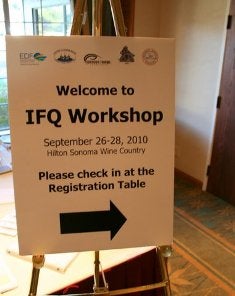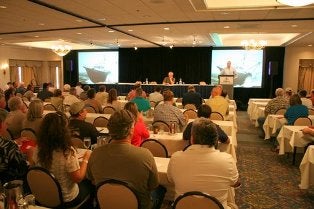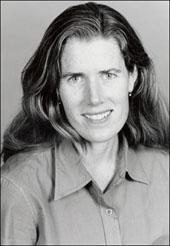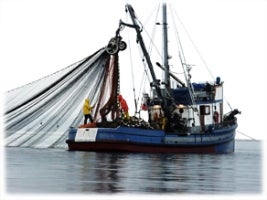Sector management has been in place in the New England fishery now for several months, and while there are still some issues to be worked out, preliminary data show some positive results. The National Marine Fisheries Service (NMFS), National Oceanic and Atmospheric Administration (NOAA), fishing industry and the New England Fishery Management Council are all working together to address some of the initial hurdles and to help sectors operate more smoothly.
For starters, on Thursday the Council unanimously agreed to establish accumulation limits for the groundfish fishery. Once the cap is in place, this will benefit small boats and fishing communities because there will no longer be excess accumulation by a small group of individuals. This will make it easier for small boats to continue to fish profitably.
As reported at the Council meeting, the first three months of sector operations resulted in (May 1 – August 15):
- Fishermen earning more money for less fishing under the new system. In 2010, landings are down compared to 2009. Only 85.8 percent of total landings last year were landed this year (for the same period of time). Meanwhile, revenues are up 112.4 percent.
- Sector fishermen are avoiding weak stocks and targeting robust stocks. The ratio of Georges Bank cod to Georges Bank haddock (in metric tons) in 2009 was 1121:1532. In 2010, it was 743:2768.
- Landings of Gulf of Maine winter flounder, a stock at very low abundance, are being effectively avoided under sectors. In 2009, 66 metric tons were landed. In 2010, 32 metric tons were landed.
Other developments include:
- Sectors are more effective than the old days-at-sea policy and more people are getting out of the common pool and into sectors as a result. NMFS announced this week that 822 permits have enrolled in sectors for 2011, an 8 percent increase from this year, representing 98 percent of annual catch limits.
- Responding to industry requests, NMFS/NOAA committed at the Sept. 9 groundfish committee meeting to immediately improve the weekly information flow between the agency and sector managers.
- Earlier this week, NOAA Assistant Administrator for Fisheries Eric Schwaab announced plans to conduct a regional audit of the fishery management process in New England, to help improve relationships between key stakeholders and to help sectors operate more smoothly.
- Also this week, Commerce Secretary Locke announced that $3 million in federal grants would be made available for cooperative research that will help fishermen develop new equipment to prevent bycatch in the New England region.
















 Just last week our fisheries policy guru, Shems Jud, attended the
Just last week our fisheries policy guru, Shems Jud, attended the